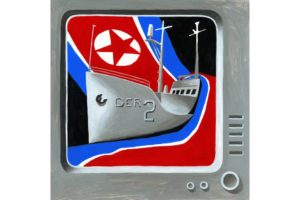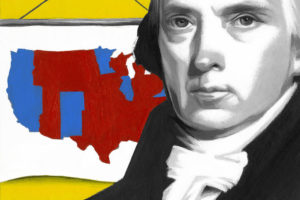The Pueblo incident, involving the North Korean takeover of a spy ship, turns 50

ILLUSTRATION: THOMAS FUCHS
Fifty years ago, on Jan. 23, 1968, North Korean forces captured the U.S. Navy spy ship Pueblo in international waters. North Korea took 82 crew members hostage (one was killed in the attack) and subjected them to 11 months of sporadic torture and starvation, humiliating appearances and forced confessions before an international radio and TV audience. Communications technology had given the ancient practice of hostage-taking a whole new purpose as a tool of propaganda.
Hostages have always been a part of warfare. By the second millennium B.C., Egyptians would take the young princes of conquered states and hold them as surety for good behavior, treating the young nobles well with the aim of turning them into future allies.
The Romans admired this tactic and imitated it. But others were simply interested in money. As a young man, Julius Caesar (100-44 B.C.) was held for ransom by pirates. A biographer of the time writes that while hostage, Caesar amused himself by reading his poems and speeches to his captors. The pirates assumed he was mad, especially when he promised to come back and hang them all. Once the ransom had been paid, the future general fulfilled his vow, hunting down the pirates and executing all of them.
During the Middle Ages, a hostage was better than money in the bank. Negotiating parties used hostages to enforce peace treaties, trade deals and even safe passage. In 1412, for instance, a French political faction sealed an alliance with the English King Henry IV. As part of the guarantee, the 12 year-old John of Orléans, Count of Angoulême, was sent to England, where he remained a political hostage for the next 32 years.
If a deal fell apart, however, retribution could be devastating. During the Third Crusade (1189–1192), King Richard I of England, known as the Lionheart, ordered the massacre of nearly 3,000 Muslim hostages after the Sultan Saladin reneged on his promise to pay a ransom and return his Christian prisoners along with relics of the True Cross.
Brutality toward hostages has been a lamentably common feature of modern warfare. The Germans showed little compunction during the Franco-Prussian War of 1870-71, when they used civilians as human shields on military trains. During World War II, amid a range of other atrocities, the Nazis killed thousands of civilian hostages across Europe, often in reprisal for earlier attacks. During one massacre in German-occupied Serbia in 1941, 100 hostages were to be shot for each dead German soldier.
The idea of hostage-taking as an end in itself is largely a 20th-century development—a way to exploit the powerful reach of mass media. The North Koreans were hardly alone. Domestic extremists also saw the propaganda value of hostages, as in the 1974 kidnapping of Patty Hearst by the Symbionese Liberation Army.
Just five years later, students supporting Iran’s Islamic revolution stormed the U.S. Embassy in Tehran and took 66 American hostages. The students had various demands, among them the extradition of the deposed shah. But their real motivation seemed to be inflicting pain on the captive Americans—who were beaten, threatened with death and paraded in blindfolds before a mob—and on the U.S. itself. There were some early releases, but 52 hostages were held under appalling conditions for 444 days.
Today, memories of the Pueblo incident and the Iran hostage crisis have faded, but both hostage-takings have had a lasting influence on American attitudes. In certain ways, they still define U.S. relations with the regimes of North Korea and Iran.






